-
Risk of another Chernobyl- or Fukushima-type accident worryingly plausible
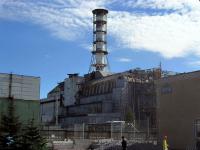
The biggest-ever statistical analysis of historical nuclear accidents suggests that nuclear power is an underappreciated extreme risk and that major changes will be needed to prevent future disasters. The researchers’worrying conclusion is that, while nuclear accidents have substantially decreased in frequency, this has been accomplished by the suppression of moderate-to-large events. They estimate that Fukushima- and Chernobyl-scale disasters are still more likely than not once or twice per century, and that accidents on the scale of the 1979 meltdown at Three Mile Island (a damage cost of about $10 billion) are more likely than not to occur every 10-20 years.
-
-
X-ray vision: Bomb technicians strengthen their hand with Sandia’s XTK software
X-Ray Toolkit (XTK), an image-processing and analysis software developed at Sandia National Laboratories, has been adopted by the military and emergency response communities in the United States and around he world. “XTK is the standard in the field not only nationally, but internationally. It made the average bomb tech a better bomb tech,” said Craig Greene, a special agent and bomb technician at the Albuquerque, New Mexico FBI. “In the past twenty years, the bomb technician community has progressed from the Stone Age to the twenty-first century in terms of equipment and procedures, and XTK is a major part of that progression.”
-
-
DHS takes delivery of RadSeeker which identifies threat materials in shielded, masked, or concealed situations
The first regular shipments of the Smiths Detection RadSeeker featuring Symetrica’s Discovery Technology Sub-System will begin this fall as the first part of a contract with the Department of Homeland Security (DHS). Symetrica’s Discovery Technology at the heart of RadSeeker identifies threat materials in shielded, masked, or concealed situations.
-
-
N. Korea’s test of miniaturized warhead, submarine-launched ballistic missile, are game changers
North Korea has conducted its fifth nuclear test last night, marking the 68th anniversary of the nation’s founding. Military analysts say the test shows a worrisome improvement in North Korea’s nuclear capabilities: It was the most powerful nuclear test to date, with a 10-kiloton yield – slightly smaller than the yield of the bomb dropped on Hiroshima, estimated to have been between twelve and eighteen kilotons. The warhead tested in the explosion was miniaturized, indicating that North Korea now has the capability to mount a nuclear warhead on a missile. Last night’s test, together with North Korea’s proven progress in launching ballistic missile from submarines, mean that the country is getting closer to possessing a nuclear arsenal capable of hitting the United States.
-
-
Why ratifying the Chemical Weapons Convention is in Israel’s best interest
When the time came to commemorate the 100th anniversary of the first major use of chemical weapons, it seemed there was at last a real chance of ridding the world of all chemical weapons in the very near future. Almost all countries had already joined the Chemical Weapons Convention (CWC), which commits countries to the supervised destruction of all stockpiles of chemical weapons – with only two states as yet unwilling to sign: North Korea and Egypt. But there’s another exception: Israel, which has signed the convention but is refusing to ratify it. Chemical weapons have no place in a civilized society. They have little to no use as a tactical deterrent, and their effects are indiscriminate and appalling. We have a unique opportunity to rid the world of this scourge, and we’re so close to doing so. It’s high time Israel joined the rest of the world.
-
-
FBI’s WMD Directorate marks its first decade
If you can imagine a disaster involving explosives or the release of nuclear, biological, chemical, or radioactive material, there is a pretty good chance a group of subject-matter experts within the FBI has built an elaborate scenario around it and tested how well emergency responders face up to it. It is the main jobs of the Weapons of Mass Destruction (WMD) Directorate — to imagine worst-case scenarios and then devise ways to prevent and prepare for them. The Directorate was created ten years ago, on 26 July 2006.
-
-
Syria chlorine attack claims: what this chemical is and how it became a weapon
New claims that the Syrian government has dropped barrel bombs full of chlorine on a suburb of Aleppo are the latest in a series of allegations of chemical weapon use. Although the Syrian government denies using chemical weapons, a recent UN-led enquiry found it had used chlorine on at least two occasions. The first gas attack using chlorine was launched on 22 April 1915 in the trenches on the Western front, near Ypres. Gas masks were developed to protect against chlorine attacks and other chemical warfare agents were developed. But chlorine remains the simplest chemical weapon and reappeared on the battlefield during the Iraq War and allegedly now in Syria. In the Second World War, both sides of the conflict knew that the other side had weaponized chlorine and refrained from using it. Today in Syria, it sadly appears this may not have been the case.
-
-
U.S. violating nonproliferation agreement: Nuclear experts
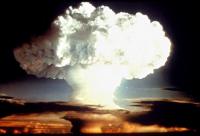
More than two dozen nuclear experts, including former U.S. officials under the six preceding presidents of both parties, accused the Obama administration of violating a 2012 nonproliferation agreement to end exports to Europe of bomb-grade, highly enriched uranium (HEU) for production of medical isotopes. The administration proposes to export sixteen pounds of nuclear weapons-grade uranium metal to France to produce medical isotopes in Belgium and the Netherlands.
-
-
Iran received secret exemptions from complying with some facets of nuclear deal
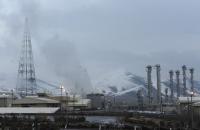
The nuclear deal between the P5+1 powers and Iran – the official named is the Joint Comprehensive Plan of Action (JCPOA) — placed detailed limitations on facets of Iran’s nuclear program that needed to be met by Implementation Day, which took place on 16 January 2016. Most of the conditions were met by Iran, but some nuclear stocks and facilities were not in accordance with JCPOA limits on Implementation Day. In anticipation, the Joint Commission had earlier and secretly exempted them from the JCPOA limits. “Since the JCPOA is public, any rationale for keeping these exemptions secret appears unjustified,” say two experts. “Moreover, the Joint Commission’s secretive decision making process risks advantaging Iran by allowing it to try to systematically weaken the JCPOA. It appears to be succeeding in several key areas.”
-
-
A new generation of low-cost, networked, nuclear-radiation detectors
A DARPA program aimed at preventing attacks involving radiological “dirty bombs” and other nuclear threats has successfully developed and demonstrated a network of smartphone-sized mobile devices that can detect the tiniest traces of radioactive materials. Combined with larger detectors along major roadways, bridges, other fixed infrastructure, and in vehicles, the new networked devices promise significantly enhanced awareness of radiation sources and greater advance warning of possible threats.
-
-
Libya’s remaining chemical weapons materials removed
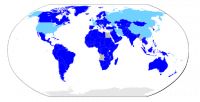
The director-general of the Organization for the Prohibition of Chemical Weapons (OPCW), ambassador Ahmet Üzümcü, announced a milestone in the operation to verifiably eliminate Libya’s remaining chemical weapons stocks by confirming that the chemicals have been successfully removed from Libya on 27 August 2016.
-
-
Looking from space for nuclear detonations
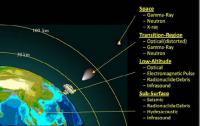
Sandia has been in the business of nuclear detonation detection for more than fifty years, starting with the 1963 launch of the first of twelve U.S. Vela satellites to detect atmospheric nuclear testing and verify compliance with the Limited Test Ban Treaty of 1963 and subsequently the Threshold Test Ban Treaty of 1974. That marked the start of the U.S. Nuclear Detonation Detection System that supports treaty monitoring. The Global Burst Detection (GBD) system launched 5 February from Cape Canaveral aboard the 70th Global Positioning System (GPS) satellite. The GBD looks for nuclear detonations around the world, offering real-time information about potential activity to U.S. policymakers. The launch was the 12th and final of the Block IIF (GPSIIF) series of GPS satellites in medium Earth orbit.
-
-
Watchdog: Evidence suggests Assad kept chemical weapons program in violation of 2013 deal
After launching a lethal sarin gas attack in August 20013 — which killed 1,400 Sunni civilians in a Damascus suburb — the Assad regime agreed to get rid of its nerve agents under the supervision of OPWC, the UN chemical weapons watchdog. In summer 2014 OPCW announced that Syria’s declared chemical weapons stockpile had been removed – but in a classified report submitted Wednesday to the Security Council, OPWC says that Syria has violated the 2013w agreement by keeping some of its chemical weapons program, and by continuing to use chemical weapons in attacks against civilians.
-
-
Nuclear forensics summer program trains students for a future in nuclear security
A sure sign of summer is the return of interns to the Lawrence Livermore campus. Students interact with premier researchers and access equipment and facilities not available anywhere else, while scientists lay groundwork for advancing their fields. LLNL runs an eight-week summer internship for students interested in nuclear science and its range of specialties — nuclear forensics, environmental radiochemistry, nuclear physics, and beyond. Together, these disciplines support the laboratory’s nuclear security mission through analysis of nuclear processes and properties.
-
-
Reactor safety experts from Sandia help industry learn from Fukushima accident
Reactor safety experts from Sandia National Laboratories and elsewhere are sharing lessons learned in Japan’s Fukushima Daiichi nuclear accident and other severe accidents that pushed nuclear power plants past their limits. The safety experts seek to demystify what happens during an accident, to help engineers/operators learn what decisions they might need to make in the event of an accident at their plants, and to provide insights into the non-intuitive nature of accidents.
-
More headlines
The long view
Keeping the Lights on with Nuclear Waste: Radiochemistry Transforms Nuclear Waste into Strategic Materials
How UNLV radiochemistry is pioneering the future of energy in the Southwest by salvaging strategic materials from nuclear dumps –and making it safe.
Model Predicts Long-Term Effects of Nuclear Waste on Underground Disposal Systems
The simulations matched results from an underground lab experiment in Switzerland, suggesting modeling could be used to validate the safety of nuclear disposal sites.
